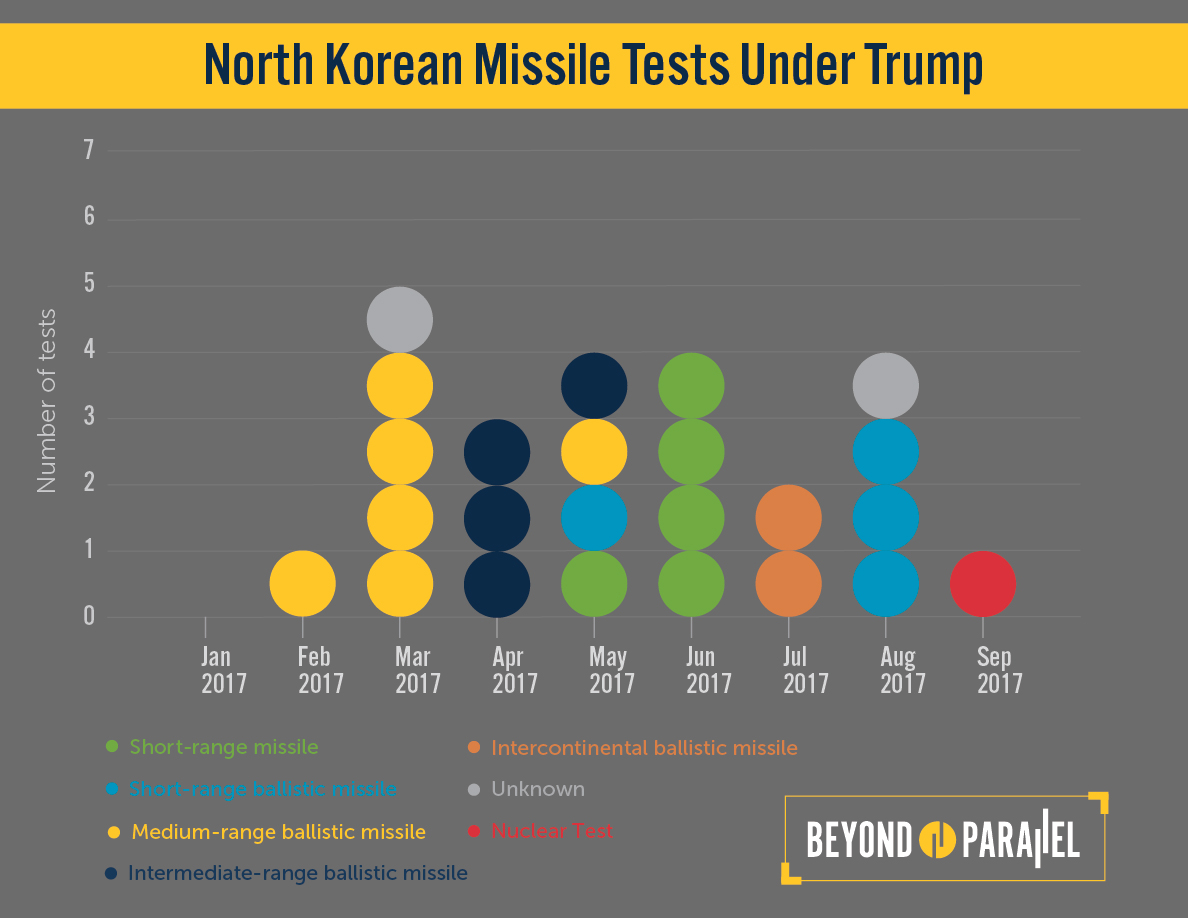
Ramifications of North Korea’s Sixth Nuclear Test
On September 3, North Korea conducted its sixth nuclear test. North Korean state media announced that the test was of a hydrogen bomb that could fit on the top of an intercontinental ballistic missile (ICBM). The bomb’s explosive yield is reported to be at least five times larger than the one detonated in September 2016 during North Korea’s 5th nuclear test.

This is the first nuclear test by North Korea during President Trump’s term in office and the 16th WMD-related event, including missiles tested (of which there were 23), since his inauguration. The nuclear test came one day after North Korean state media released pictures of Kim Jong-un examining a model of what was claimed to be a miniaturized thermonuclear bomb. The action also follows recent long-range ballistic missile tests of the Hwasong-14 (ICBM) and the Hwasong-12 (IRBM) in July and August of this year.

• At its current pace, North Korea is on a path to do more missile and nuclear tests than in any four-year U.S. presidential term (Obama’s two terms in office saw 61 missile testing events with over 100 missiles tested and four nuclear tests conducted).
• Guam is likely to become the focus of North Korean attention with rhetoric, bluster, and possibly even testing in the future to suggest a DPRK ability to bracket the island and undermine the credibility of U.S. allied defense commitments. North Korea may also attempt a ballistic missile launch on a standard trajectory into the Pacific Ocean.
• Though China and Russia will likely support additional United Nations sanctions actions as a result of this test, they will also continue to peddle “freeze for freeze” proposals that call for a halt to U.S. military exercises in return to a halt to DPRK testing. Yet, neither Beijing nor Moscow have confirmed that such a proposal has been vetted positively with the North Koreans.
• The Trump and Moon administrations are likely reviewing all options, including military ones, to respond and deter further provocative actions from North Korea. However, at the minimum there will be a push in the international community for heightened sanctions and diplomatic pressure. A menu of options should include:
1. Sectoral sanctions – Cut off North Korea’s external oil supplies. China will be reluctant; however, proposals for UN sanctions will likely include this measure. North Korea has reportedly already been stockpiling oil in anticipation of such sanctions.
2. Targeted trade sanctions – Prohibit UN member states from importing textile products from North Korea, which are one of the country’s largest remaining sources of foreign currency for the regime.
3. Slave labor – Implement a worldwide ban among UN member states on all use of North Korean forced labor that goes beyond the UNSCR 2371 provisions that essentially cap the number of laborers allowed to work in countries like China and Russia where they already have permits.
4. Transportation / shipping sanctions – Impose a complete global ban that prohibits state-run Air Koryo from transiting airports to transport bulk cash, luxury goods, and materials for Pyongyang’s illicit activities.
5. Financial sanctions/secondary sanctions – Impose and enforce more sanctions designations for individuals and organizations in 3rd party countries, including China, that facilitate North Korean money laundering, re-export of materials, or illicit proliferation-financing activities.
